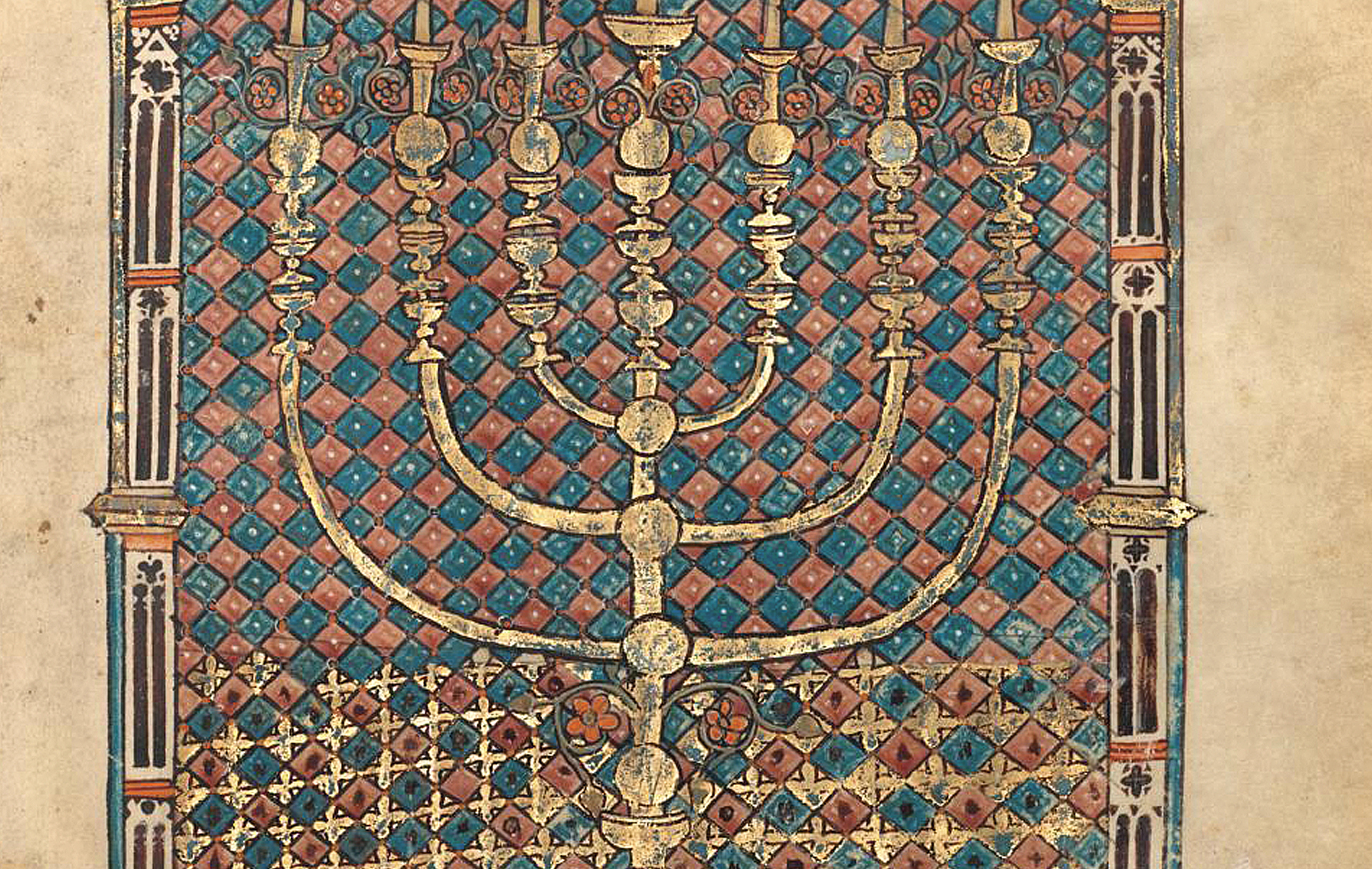
What is 1,168 pages long and 700 years old? That would be the Illuminated Rothschild Pentateuch, an ancient Torah recently acquired by the J. Paul Getty Museum.
“It’s the era essentially before 1300,” Elizabeth Morrison, senior curator of manuscripts at the Getty, told the Journal via phone. “In the 22 years I’ve been here, I think we’ve been able to collect something like five objects from the 13th century,” she said. “The further you go back in time, the less there is available. To have [this manuscript] with the Hebrew codex on top of that, was just amazing to us.”
Created by an unknown artist and dated 1296, the pages are filled with lively decorative motifs, hybrid animals and humanoid figures, with text featuring gold lettering.
“The images are really trying to bring attention to the words themselves, which convey God’s meaning,” Morrison said. “Trying to look at and understand the layers of these pages I think will be endlessly fascinating for visitors.”
Morrison said the Getty had been searching for decades for a great Hebrew manuscript to add to its collection.
“Our collection was founded in 1983 with the acquisition of a large private collection from Germany called the Ludwig Collection,” she said. “We were able to acquire the entire collection at once, [but] it didn’t have a Hebrew manuscript.”
“If you look at this object you have the entire story of the Jewish Diaspora from the Middle Ages to today.” — Elizabeth Morrison
Enter the Rothschild Pentateuch, which was brought to the museum privately by a representative of the family and made possible with the support of the Ronald S. Lauder family.
“If you look at this object, you have the entire story of the Jewish Diaspora from the Middle Ages to today just by tracing the roots of the single manuscript,” Morrison said. “All the Jews were kicked out of England in 1290, and because of certain clues we see in the formulation of this particular text, we think that it was either made by or for English émigrés who settled either in France of Germany,” she added.
Morrison said they were able to trace the journey of the manuscript to 15th-century Italy – — “because we have signatures of people in Italy.”
The manuscript later traveled to Poland, then back to Germany, where it joined the Rothschild Collection. It was then donated to a German public library, where it remained during World War II. After the war, it was traded to a Jewish family that had immigrated to the United States, who in turn traded it for land that they had in Frankfurt. That family immigrated to Israel.
“We are the current safe-keepers of this manuscript, so I feel like we, as the Getty, are the most recent in this incredibly illustrious line,” Morrison said. “The story continues to build in our own lifetime.”
The Rothschild Pentateuch is the only illuminated medieval Hebrew manuscript in California. (The Rothschild Pentateuch has 150 illuminated pages). While UCLA has a few Hebrew manuscripts from the Middle Ages, they’re not illuminated.
“I feel like this is our opportunity not only to reach out and make a connection with the large Jewish community here in Los Angeles,” Morrison said, “but everybody’s going to be fascinated by this.”
The Rothschild Pentateuch will debut at the Getty Center in “Art of Three Faiths: A Torah, a Bible, and a Qur’an” beginning Aug.7, and will run through Feb. 3.























 More news and opinions than at a Shabbat dinner, right in your inbox.
More news and opinions than at a Shabbat dinner, right in your inbox.